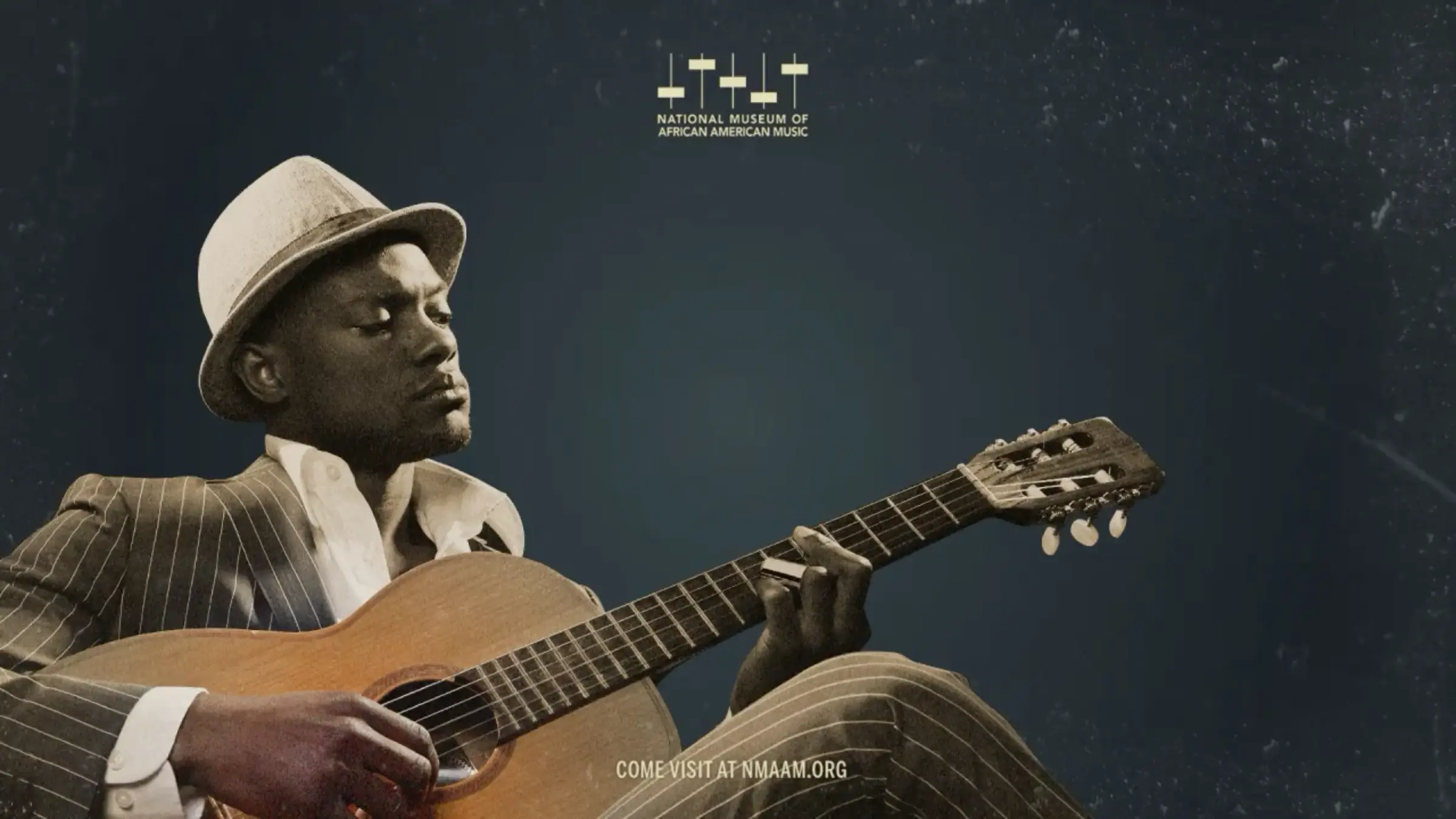Some museums are showrooms built around collections of art and artifacts; others are classrooms that approach history and issues with pedagogical rigor.
Only a few museums have discovered the right balance of content and context. The National Museum of African-American Music doesn’t just hit that nail on the head—it does so in a way that puts joy in your heart, knowledge in your head, and worms in your ears.
We Walked in Through the Out Door (the Out Door)
The NMAAM is located in the middle of everything in Nashville: where Honky Tonk Alley meets the historic Ryman Auditorium, Bridgestone Arena, and a new shopping complex. However, when the Complimentary Spouse and I showed up at 501 Broadway, we felt a bit underwhelmed.
The museum was well-marked but not very welcoming—not much more than glass doors. Beyond that, a staircase. Then, a brightly decorated but windowless hallway.
At the end, we realized we had gone in a side door. The main entrance is on Representative John Lewis Way. It’s much more prominent and opens up to an airy, sunlit entry hall.
What can I say? We were freezing1 and so eager to get inside that we missed the sign telling us to go around the corner.
Now that we were in the right place, we bought our tickets ($35 each) and lamented that the Temptations’ “Ball of Confusion,” which was playing, seems as relevant today as it was in 1970.
I also purchased an RFID bracelet—more about that later.

OK, let’s get to the exhibits.
Hitting the Right Notes
The museum experience starts with a short film that uses art, photographs, video—and, of course, music—to explore the history and evolution of American-American music from Western African cultures to today.
Not only was it the perfect balance of content and context, but it was also a great way to prepare us for the rest of the museum and get the most out of our visit.
The galleries are divided into broad themes, covering the Transatlantic Slave Trade, enslavement in America, Emancipation, Restoration, Jim Crow, the Great Migration, the Civil Rights Movement, and the present day.
There’s so much to see and do at NMAAM that I won’t even attempt to summarize it here. Instead, let’s see how dull Britt’s clothes are compared to one of Clinton’s Funkadelic outfits,

Gift Shop, Schmift Schmop. The Best Souvenirs Were the Ones We Made Ourselves.
Where NMAAM really shines is its use of technology.
For example, Britt and I didn’t just learn about the blues—we made our own songs and videos.
In another gallery, we became music producers.
We also laid down some hip-hop beats.
Stay on the Scene Like a Sex Machine Cool Touchscreen
Oh, we’ve only scratched the surface of innovative, interactive storytelling at NMAAM.
In each gallery, we found touchscreen stations that let you select an artist, hear snippets of their music, and see who influenced them, who they influenced, and their contemporaries. Click on one of those artists and you’d see their influencers, contemporaries, and influencees.2
You couldn’t drag Britt and me away from those things. We’d put on the headphones and go down rabbit holes. I can’t think of a better example of a museum putting content and context together to tell a story.
And what about that RFID bracelet I mentioned above? I’m glad you asked. It lets you build a custom playlist of the artists and songs you find on the stations with just a tap. You can download the playlist after your visit.
Britt and I tapped the screen a lot. And here’s the playlist we created:
There’s a ton of music here. If you were flying from JFK to Singapore—the longest flight in the world—you’d still have a few hours left after you landed.
Everything Is Everything
African-American music is social commentary and escapism, woe and joy, despair and faith, grounded in tradition and fueled by innovation. It captured the zeitgeist and was a catalyst for change.
NMAAM helped me see the big picture by weaving facts and feelings into a richer, more complete story. I can’t think of many museums that do it better—or many topics more deserving of such masterful curation and storytelling.

